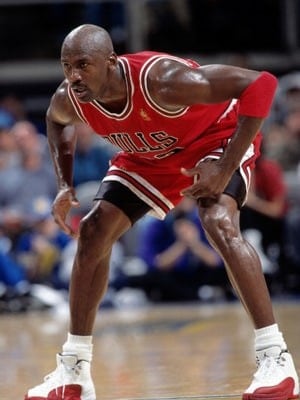There are so many statistics that go into every single player in major professional sports. When it comes to the NBA in particular, there are a few key stats that people utilize to determine how good a player is. The downside is that a lot of people don’t really understand where some of these stats come from. That’s why it’s important to think about how these numbers get formulated. One of them that needs explaining is defensive efficiency. So, how do you calculate defensive efficiency in the NBA?
How To Calculate Defensive Efficiency? To calculate defensive efficiency you divide points allowed by the number of possessions played over any period of time. Take the result and multiply it by 100, to give you defensive efficiency per 100 possessions. The defensive efficiency stat formula can be used to calculate offensive efficiency. Simply by swapping out points allowed for points scored.
Defensive Rating (per 100 possessions) = Points Allowed / Total Possessions x 100
This is a very simple way of explaining a complex formula. The main complexity comes from calculating the amount of possessions. The second challenge is the complexity of applying them to a single player rather than an entire team.
Now that we know a little bit more about what defensive efficiency is, we also have to discuss the statistics of defensive rating and offensive player efficiency.
Does defensive efficiency refer to a player or a team?
Defensive efficiency in the NBA can be used to analyze both team and player performance. The use of these advanced metrics is more commonly used to take a players statistical performance out of the context of his team, to compare him with a player or group of players across the league.

However it is absolutely still a relevant statistic to use to better understand a team’s performance.
What is defensive efficiency used for?
Defensive efficiency is used by coaches, media and fans to analyze a team or players performance. Rather than simply using the plus/minus metric that you can see in any modern box score.
Defensive efficiency, while not a perfect metric, takes away a lot of the noise. Specifically issues introduced by pace of play and minutes played (when analyzing on a player level). Pace can dramatically affect how good a defense looks, using simple points allowed or plus minus. A team that plays fast on purpose may well concede more points per minute of Basketball played. This doesn’t therefore show how good that player or team is at limiting points each time the opponents attack their basket.
Defensive Efficiency or Defensive Rating, can give an insight on a per 100 possession level, taking away this noise.
It can also be used to show an individual player’s impact. If a player only plays 17mins a game, they will probably see dramatically less points allowed than a player playing 36 mins a game. Working it out on a per 100 possession basis is a great way of seeing around this, to their true defensive impact on court.
Where can I find defensive efficiency stats?
The NBA, ESPN and many other Stats Analytics sites – like StatMuse.com – have their own versions of Defensive efficiency rating available. As well as a host of other statistics and information on how to interpret them.
The below Tweet from Stat Muse explains some of the issues with using these stats as anything more than a guide. Referencing both the initial creator of many advanced NBA Stats, John Hollinger and a pioneer looking to build on his great work, Dean Oliver.
What is defensive efficiency shown over 100 possessions?
As alluded to above, defensive efficiency in the NBA is used to take away the noise of raw “points allowed” data and basic box score “plus minus”. By dividing it by 100 possessions, it sets all teams and players on an equal footing for things like pace and minutes played. Giving a much purer view of the impact had every time opponents try to score against them.
With the rise of statistics like Shot Tracking, where you can filter statistics by which time of shot was taken (Three Point, Dunk, Pick and Roll, Pick and Pop, Off the Dribble, After Time Out etc) It is possible to analyze how well a player or team defends each possession of a certain type of attack. Further allowing analysts to gain insight into the micro of NBA Basketball games.
